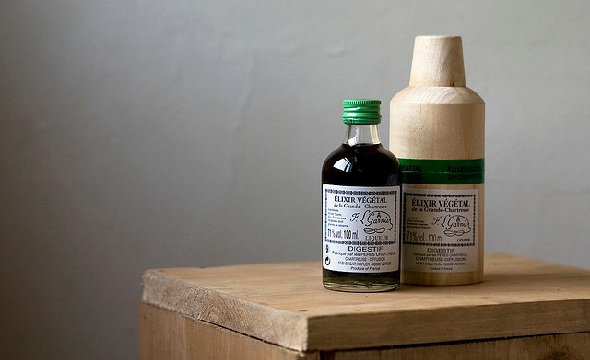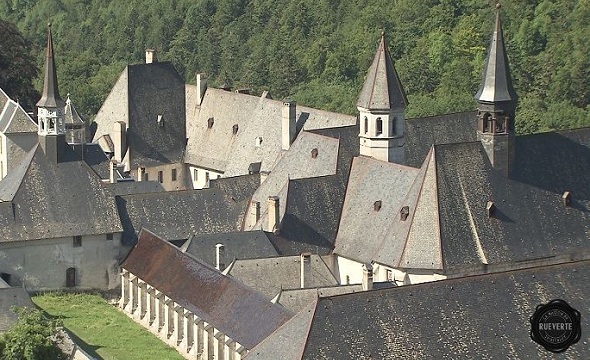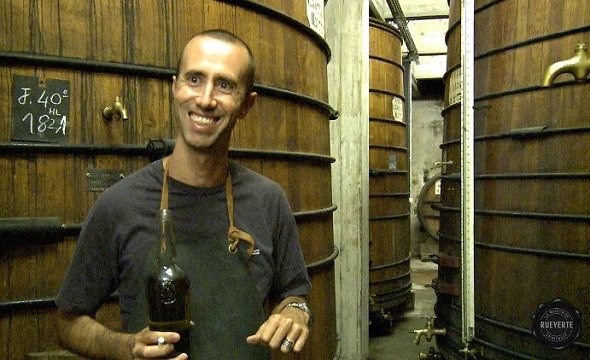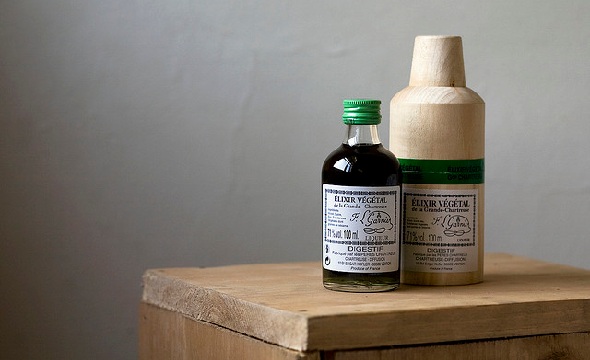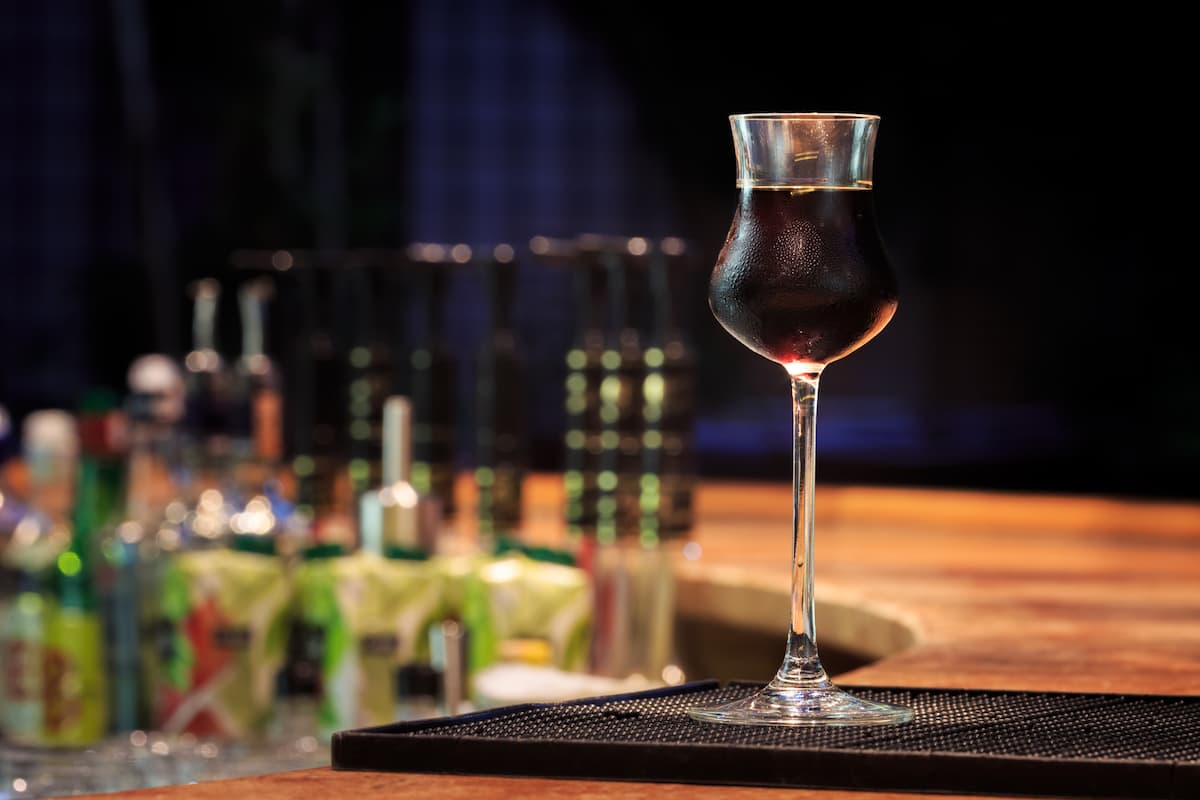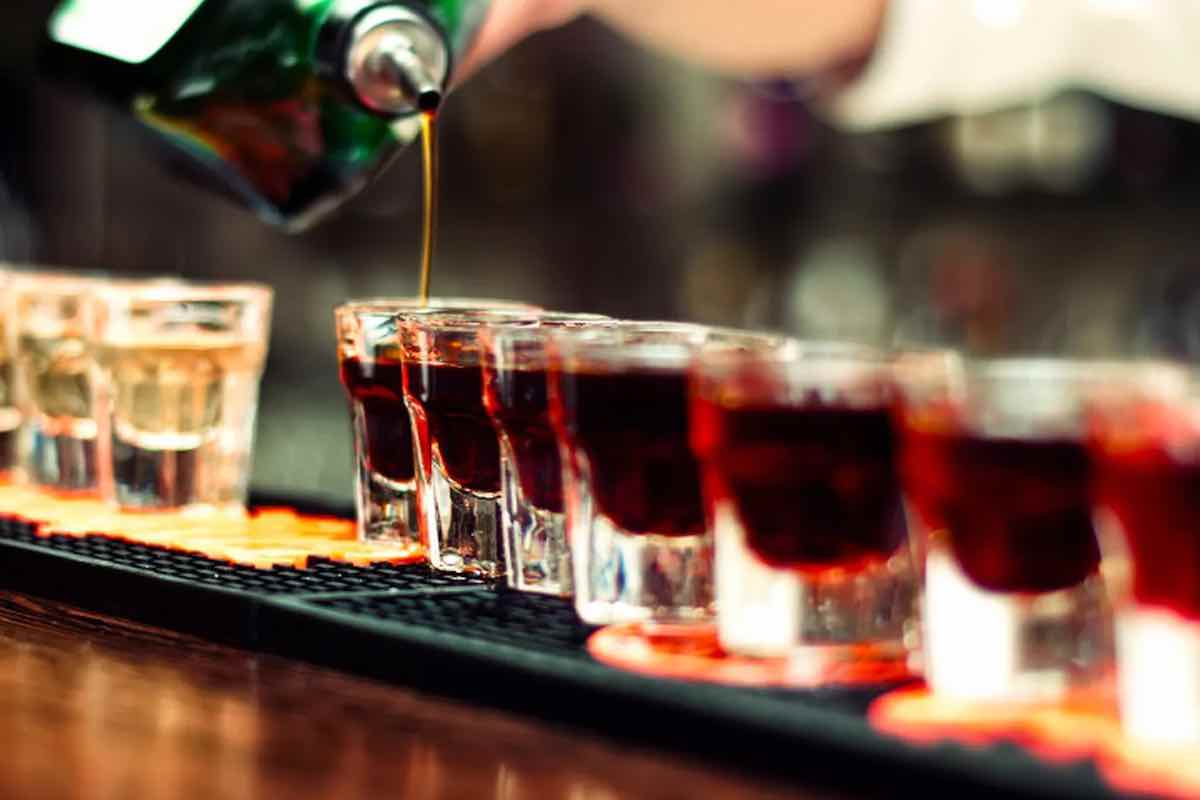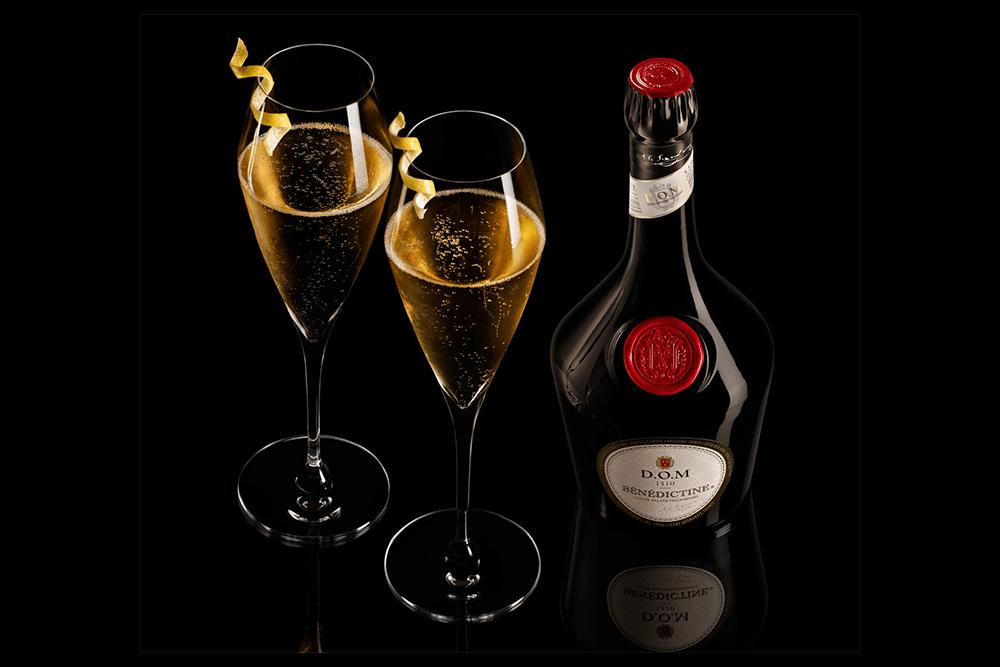Author Alex Truman works for Rueverte.com, an online spirits and liqueurs retailer specializing in absinthes, bitters and digestifs.
You’ve probably come across chartreuse at your favorite cocktail bar. And it’s usually available in two ubiquitous varieties – green and yellow. But there are many variations of this interesting liqueur, which is backed by a rich history.
Chartreuse is a very unique spirit hailing from the Chartreuse Mountains region of Grenoble in France. It is produced solely by the monks of the Carthusian order in the Grand Charter house of the monastery (pictured below).
The most fascinating thing behind the production of chartreuse is the pure secrecy of the recipe. It is believed that only Minister Benoit and Brother Jean-Jacques know the full list of the 130 ingredients included in the original recipe. The common perception is that 1/3 of the ingredients originate from the Chartreuse region, with the remainder coming from regions all over the world.
The monastery was founded in 1084 by Saint Bruno of Cologne, Germany. The recipe was given to the monks by one of King Henry IV’s Marshall’s in 1605, and this was experimented with for many years. Fast forward a century, and the monk Jérôme Maubec had developed Élixir végétal de la Grande-Chartreuse in 1737. The drink began to be produced more and more as it increased in popularity, and eventually a milder version was created in 1764 – Chartreuse Vertre (green), which was then followed by Chartreuse Juane (yellow) in 1838.
The sale of chartreuse began to finance the maintenance of the monastery and also fund charities and religious projects. Over the years, many people have tried and failed to reproduce the secret recipe, which means we’re still entirely dependent on those monks to keep us plied with this delightful spirit.
Over time, the monks have experimented further and developed many variations of chartreuse, which are certainly worth seeking out. More on that below.
Chartreuse Production
The start of the production process involves the drying, chopping and mixing of 18 tons of plant material within the main abbey of the Carthusian order. These materials are then transported to the distillery in Voiron, which is 24km away. The material will then be macerated in alcohol, and left to distil for approximately eight hours.
When the distillation process has finished, further plant material is macerated in the new distillate. This is how the liqueur gains its color. Upon the completion of the second maceration, the liqueur is taken to the largest liqueur cellar in the world in Voiron. It is left to age in oak casks, with no certain time limit. It will be bottled whenever the monks decide it is appropriate to thin it to appropriate strength.
Since the whole aura surrounding the spirit is very secretive, the best way to discover chartreuse is to taste it. It’s relatively easy to find the green and yellow varieties these days, but below are some of the lesser known variations the monks also produce.
Chartreuse Elixir Végétal
This is the original elixir produced by Jérôme Maubec in 1737. It initially contained the words “elixir for long life” on the label, however such claims are no longer acceptable on labels, so that got scrapped. The original tagline nodded to the spirit’s first use as a medical tonic, but over time it was purchased more and more frequently for the flavor.
The monks have constantly strived for perfection whilst experimenting and looking to improve the elixir. However, the drink still stays true to the original 130 ingredients from the first recipe.
The spirit was last altered in 2010 due to EU regulations that restricted the transportation and aging of alcoholic products with an ABV of higher than 70%. As the Elixir used to be 71%, the monks decided to begin thinning the spirit to 69% to keep it as similar as possible, but also making it available for transport.
Elixir Végétal can be used in many different forms. Adding a few drops into sugar water, or a cup of tea can add a lot of flavor and a new element to your drink. Of course, it’s also possible to experiment with cocktails, as this can work as a substitute for herbal bitters. The elixir is also believed to help alleviate illness and fatigue when mixed with hot water.
69% ABV, Voiron Distillery, France.
Chartreuse Génépi des Pères
It’s a common tradition for the people of the French mountain regions to produce a liquor of the same name as the region itself, with the secret recipes utilizing local herbs and plants.
This is how the monks came about producing their own Génépi, as this is a generic term for a group of plants that grow in this region. Therefore, they altered their production process to ensure that the distillate would take on all characteristics of the génépi herbs to create a unique flavor. This gives the spirit a very sweet flavoring, but also has notes of an herbal bitterness.
This spirit has become quite popular with chartreuse enthusiasts for its individual flavor and great taste. It can be enjoyed neat if well chilled, or on ice.
40% ABV, Voiron Distillery, France.
Chartreuse Liqueur du 9e Centenaire
French speakers might have guessed that this chartreuse was developed specifically as a 900th anniversary special. This was done in order to celebrate the founder of the Carthusian order, Saint Bruno.
The monks spent a lot of time and effort developing and producing this chartreuse, and the result is one of certain quality and expertise. The spirit lands somewhere between the flavors of Chartreuse Verte and Juane – certainly sweeter than Verte, but not quite as sweet as Juane.
To let the flavor develop and mature, the spirit is left to age for extensive periods of time before being bottled. The bottles are individually numbered, making each one unique. The bottle shape is similar to that of the design of the bottles used between 1840 and 1878. This chartreuse can be enjoyed chilled, or on ice.
47% ABV, Voiron Distillery, France.
